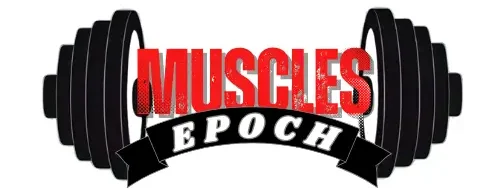Want to build strong legs but don’t have access to a leg press machine? You’re not alone. Whether you’re working out at home, training in a small gym, or just looking for more functional movements, finding the right leg press alternative can make all the difference.
The good news? You don’t need fancy equipment to grow serious lower body strength. In fact, many beginner-friendly leg press alternatives not only build muscle just as effectively, but they also improve balance, coordination, and real-world strength.
In this post, we’ll break down the best exercises you can do without a machine, using just your bodyweight or a pair of dumbbells. If you’re a beginner looking for safe, simple, and effective ways to level up your leg training—this guide is for you.
Table of Contents
Why Look for a Leg Press Alternative?
Limited Gym Access or No Machine at Home
Not everyone has access to a fully equipped gym, and that’s perfectly okay. One of the most common reasons people search for a leg press alternative is because they simply don’t have the machine available—especially beginners training at home or in minimalist fitness spaces.
Leg press machines are large, expensive, and take up a lot of space. They’re common in commercial gyms, but rarely found in home setups. Even when you do have a gym membership, the machine might be occupied or placed in a corner that’s tough to access during busy hours.
Additionally, some beginners might feel intimidated using large gym equipment right away. The leg press can seem technical or daunting at first, and improper use can lead to joint strain or poor form.
That’s where alternatives shine:
- You don’t need a membership or bulky machines.
- You can train in your living room, garage, or even a park.
- You can start with movements that feel more natural and easy to control.
Whether you’re building your strength from the ground up or working around a limited setup, leg press alternative exercises allow you to train your legs effectively, without compromising results.
Budget-Friendly & Space-Saving Options
Investing in a leg press machine isn’t just expensive—it also demands a lot of space. For beginners working out at home or in small apartments, that’s simply not realistic. A standard leg press machine can cost hundreds (even thousands) of dollars and take up more floor space than most people can spare.
That’s where leg press alternative exercises offer a major advantage. Most of the best substitutes require little to no equipment, and they still deliver serious leg-strengthening benefits.
Here’s why they’re ideal for beginners:
- Minimal Equipment Needed – Many effective alternatives, like squats and lunges, only require your body weight or a pair of dumbbells.
- Compact and Portable – Exercises like step-ups, goblet squats, or Bulgarian split squats can be done with just a chair or bench.
- Affordable – Instead of investing in expensive gym machines, a basic set of dumbbells or resistance bands can last for years and cost far less.
Even if you choose to add equipment over time, a few small items like resistance bands, a kettlebell, or adjustable dumbbells will give you all you need to target the same muscle groups the leg press works—without taking over your home.
By choosing budget-friendly and space-saving leg press alternatives, you’re not only saving money and room—you’re building strength on your own terms.
Targeting the Same Muscles with More Versatility
One of the biggest concerns beginners have when replacing the leg press is whether alternative exercises will work the same muscles. The good news? Yes, they absolutely can—and often with even more versatility.
The leg press primarily targets the quadriceps, glutes, hamstrings, and calves. But when you switch to free weights or bodyweight movements, you not only hit these same muscle groups—you also activate supporting muscles for better overall strength and coordination.
Here’s how leg press alternatives offer more versatility:
- Unilateral Training – Movements like lunges and step-ups work one leg at a time, helping to fix strength imbalances the leg press might overlook.
- Core Activation – Unlike the leg press machine (which provides back support), free weight and bodyweight exercises require core engagement for balance and stability.
- More Movement Patterns – Alternatives allow you to move in ways the machine can’t—adding variety with forward, reverse, and lateral motion.
For example:
- Goblet squats target the same quad and glute muscles but also improve posture and core stability.
- Bulgarian split squats isolate each leg, forcing both balance and strength gains.
- Step-ups mimic real-life movements like climbing stairs, making your strength more functional.
So while the leg press is a great tool, its fixed movement path can be limiting. With alternatives, you build muscle while also improving coordination, flexibility, and overall athleticism—all without being locked into a single machine.
Best Bodyweight Leg Press Alternatives for Beginners
Wall Sit
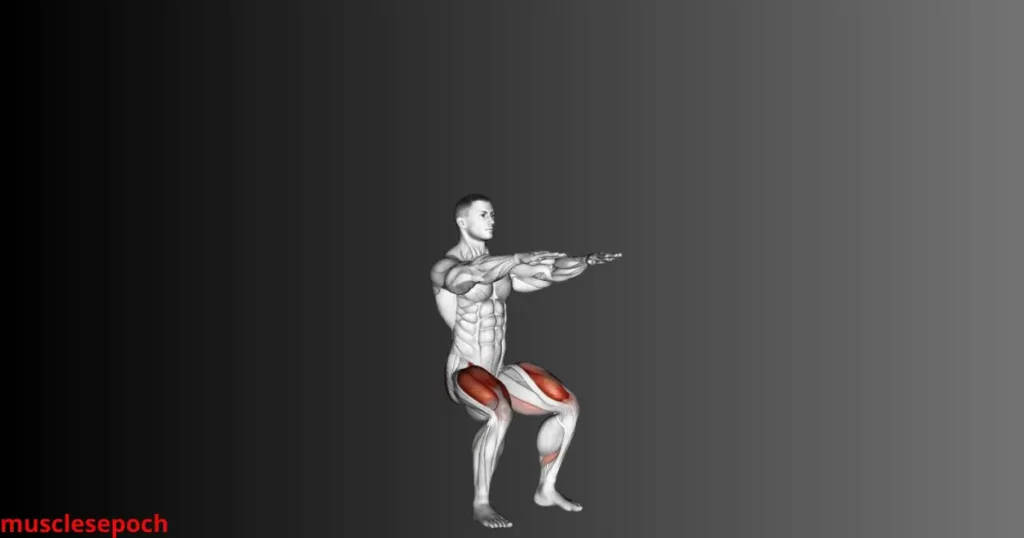
The wall sit is a deceptively simple yet incredibly effective bodyweight exercise—especially for beginners looking for a leg press alternative that doesn’t require any equipment. It targets the same key muscles: quadriceps, hamstrings, glutes, and even the calves, depending on how you position your feet.
How It Works:
To perform a wall sit, you lean your back flat against a wall and slide down until your thighs are parallel to the floor—mimicking a seated position. You then hold that static position for a set amount of time (usually 20–60 seconds to start), creating a powerful isometric contraction in your leg muscles.
Why Wall Sits Are a Great Alternative:
- No Equipment Needed – All you need is a wall. This makes it ideal for home workouts, hotel rooms, or even office break rooms.
- Low Impact on Joints – Unlike weighted exercises, wall sits are easy on the knees and hips while still delivering a burn.
- Muscular Endurance Booster – Holding the position under tension helps build muscular stamina, which translates to better performance in other leg exercises.
- Mental Toughness Builder – Holding a static position tests your willpower and focus—important qualities for long-term fitness success.
Beginner Tip:
Start with shorter holds (20–30 seconds) and gradually increase your time as your strength improves. For added intensity, you can place a dumbbell or plate on your thighs or raise your heels to engage your calves more.
The wall sit may look easy, but give it a try—you’ll quickly feel why it’s a go-to leg press alternative for beginners and pros alike.
Step-Ups (Using a Bench or Sturdy Surface)
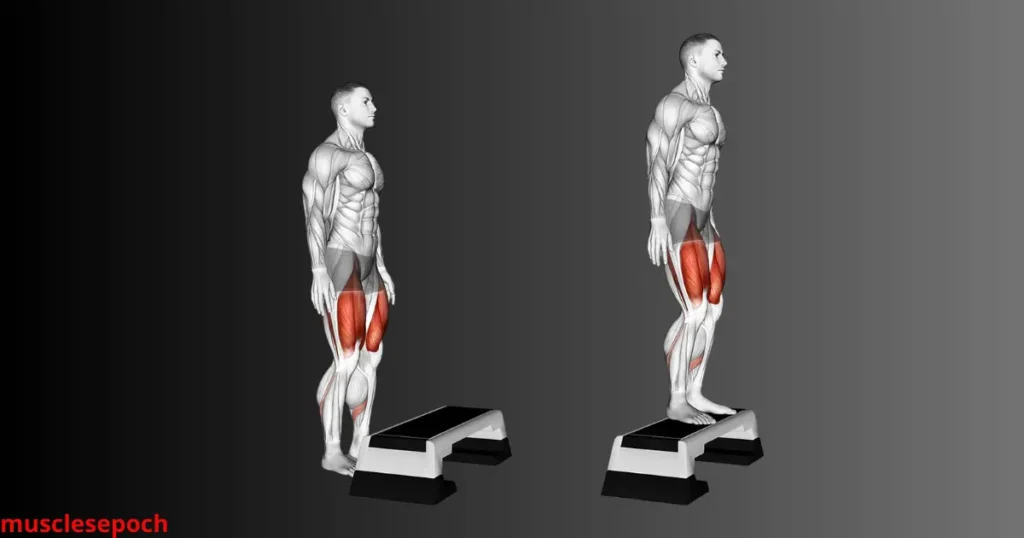
Step-ups are one of the most functional and beginner-friendly leg press alternative exercises you can do—requiring just a stable surface like a bench, step, or sturdy box. This movement closely mimics the motion of climbing stairs and provides an excellent way to build strength in your quads, glutes, and hamstrings, all while improving balance and coordination.
How It Works:
You step one foot onto the elevated surface, press through your heel to lift your body up, and then return to the starting position. The movement is then repeated with the opposite leg, either alternating or completing one side at a time.
Why Step-Ups Are a Smart Alternative:
- Unilateral Leg Training – Like lunges, step-ups work one leg at a time, helping to correct muscle imbalances and develop equal strength on both sides.
- Joint-Friendly Movement – The vertical push in step-ups is easier on the knees compared to some squat variations, making it great for beginners or those with joint concerns.
- Functional Strength – Step-ups train real-world movement patterns like walking, climbing stairs, and hiking—translating directly to everyday activities.
- Scalable for Any Fitness Level – Beginners can start with bodyweight step-ups on a low surface. As strength improves, they can increase the height or add dumbbells for resistance.
Beginner Tip:
Start with a surface that’s about knee-height or lower to ensure proper form and balance. Keep your torso upright and avoid pushing off the trailing leg too much. Focus on using your leading leg to lift your entire body.
Step-ups may look simple, but they pack a powerful punch for your legs. If you’re looking for a leg press alternative that builds strength and balance without needing a machine, this exercise deserves a permanent place in your routine.
Bodyweight Squats
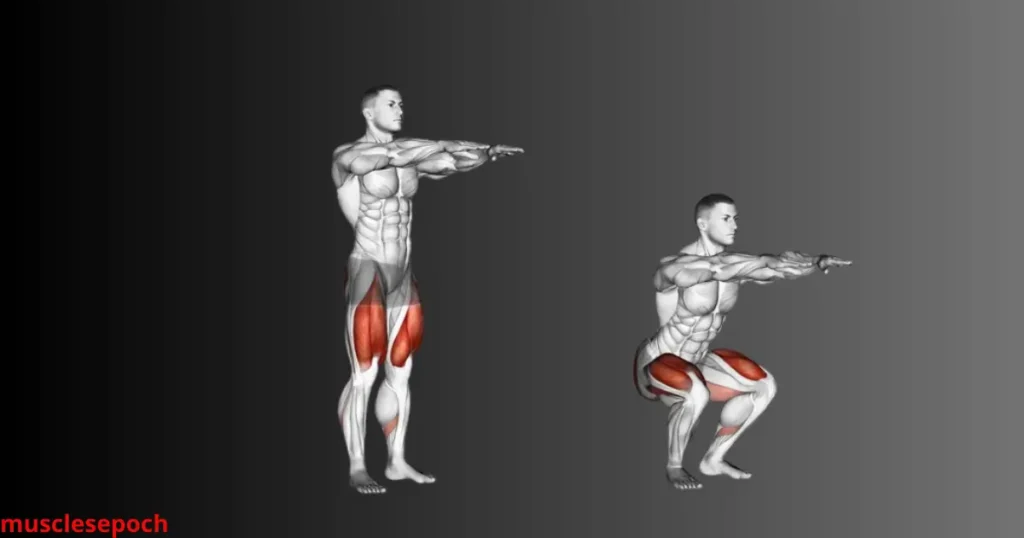
The bodyweight squat is a foundational exercise and one of the best beginner-friendly leg press alternatives you can start with. It effectively targets the quadriceps, hamstrings, glutes, and even engages the core—all without requiring any equipment.
How It Works:
To perform a bodyweight squat, stand with your feet shoulder-width apart, toes slightly pointed out. Slowly bend your knees and push your hips back, lowering your body as if sitting into a chair. Go down until your thighs are roughly parallel to the floor (or as low as your mobility allows), then push through your heels to stand back up.
Why Bodyweight Squats Are Ideal for Beginners:
- No Equipment Needed – Perfect for home workouts or anywhere you have space.
- Builds a Strong Foundation – Squats are fundamental for developing leg strength and mobility, preparing you for more advanced exercises later.
- Improves Balance and Coordination – Squatting engages your core and stabilizing muscles, helping improve overall body control.
- Low Injury Risk When Done Properly – With correct form, bodyweight squats are gentle on joints and safe for most people.
Beginner Tip:
Focus first on mastering your form. Keep your chest lifted, knees tracking over your toes, and weight in your heels. Avoid letting your knees cave inward. If needed, you can squat to a chair or bench to help with depth and confidence.
As you get stronger, you can increase intensity by adding dumbbells, slowing down the movement, or increasing reps and sets. Bodyweight squats are versatile and scalable, making them a perfect leg press alternative for beginners aiming to build strong, functional legs.
Dumbbell-Based Leg Press Alternative Exercises
Goblet Squat
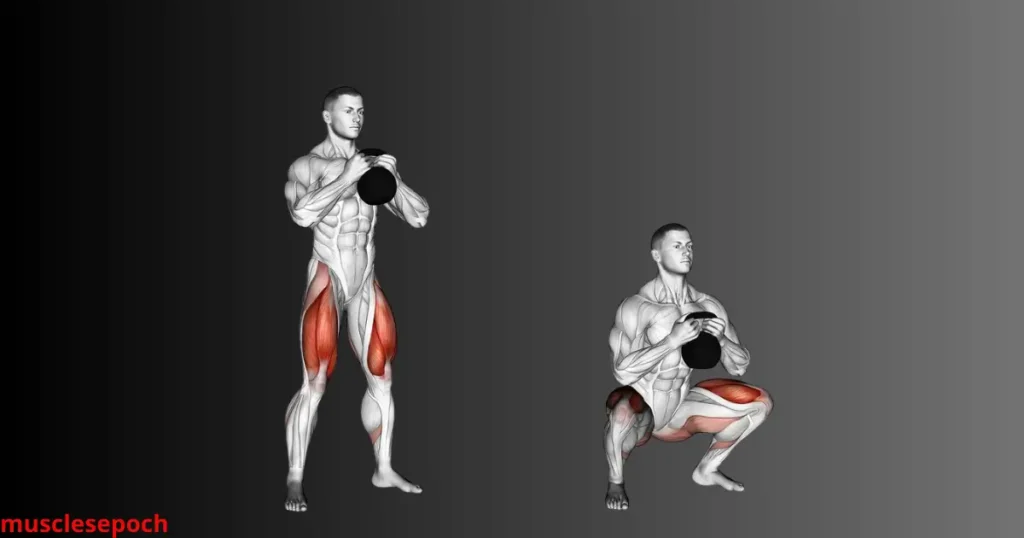
The goblet squat is an excellent leg press alternative that combines the benefits of squatting with added resistance, making it perfect for beginners who want to build leg strength without using bulky machines. It involves holding a dumbbell or kettlebell close to your chest while performing a squat, which encourages proper form and engages your core.
How It Works:
Hold a dumbbell or kettlebell vertically with both hands at chest level, keeping your elbows pointed down. Stand with your feet shoulder-width apart, toes slightly pointed out. Lower your body by bending your knees and pushing your hips back, squatting down until your thighs are parallel to the floor or as low as your mobility allows. Then, push through your heels to return to standing.
Why Goblet Squats Are a Great Alternative:
- Encourages Proper Form – Holding the weight in front helps keep your chest up and back straight, reducing the risk of leaning forward or rounding your back.
- Builds Lower Body and Core Strength – This exercise targets the quads, hamstrings, glutes, and also engages the core for stability.
- Scalable for Beginners – You can start with a light dumbbell or kettlebell and gradually increase the weight as you get stronger.
- Improves Hip Mobility and Flexibility – The goblet squat encourages a deeper range of motion compared to bodyweight squats.
Beginner Tip:
Start with a light weight to focus on your technique. Keep your weight on your heels, knees tracking in line with your toes, and avoid letting your knees collapse inward. Take slow, controlled reps to maximize muscle engagement and reduce injury risk.
The goblet squat is a versatile and effective leg press alternative that helps beginners build solid leg strength, perfect form, and confidence before progressing to heavier squats or other weighted exercises.
Dumbbell Walking Lunges

Dumbbell walking lunges are a dynamic and highly effective leg press alternative that help beginners develop balanced leg strength, improve coordination, and engage multiple muscle groups at once. This exercise targets the quads, hamstrings, glutes, and even your core and calves, all while enhancing stability and mobility.
How It Works:
Hold a dumbbell in each hand at your sides with arms fully extended. Stand tall with feet hip-width apart. Step forward with one leg, lowering your body until both knees are bent at about 90 degrees. Your back knee should hover just above the ground. Then, push through your front heel to bring your back leg forward into the next lunge. Continue alternating legs as you “walk” forward.
Why Dumbbell Walking Lunges Are a Powerful Alternative:
- Unilateral Strength Development – Because you work one leg at a time, walking lunges help correct strength imbalances and improve muscle symmetry.
- Functional and Athletic – This movement mimics real-life actions like walking, running, or climbing, making your leg strength more usable in daily life.
- Enhances Core and Hip Stability – Maintaining balance while moving forward challenges your stabilizing muscles and improves overall coordination.
- Scalable and Space-Friendly – Beginners can start with bodyweight lunges or light dumbbells and perform them in a small space, like a hallway or room.
Beginner Tip:
Take shorter, controlled steps at first to avoid wobbling. Keep your torso upright, engage your core, and focus on pushing through your front heel. If walking lunges are too challenging, start with stationary lunges and progress over time.
Dumbbell walking lunges are one of the best machine-free movements to replicate and even exceed the muscle-building benefits of the leg press—making them a must-have in any beginner’s lower body routine.
Dumbbell Bulgarian Split Squat
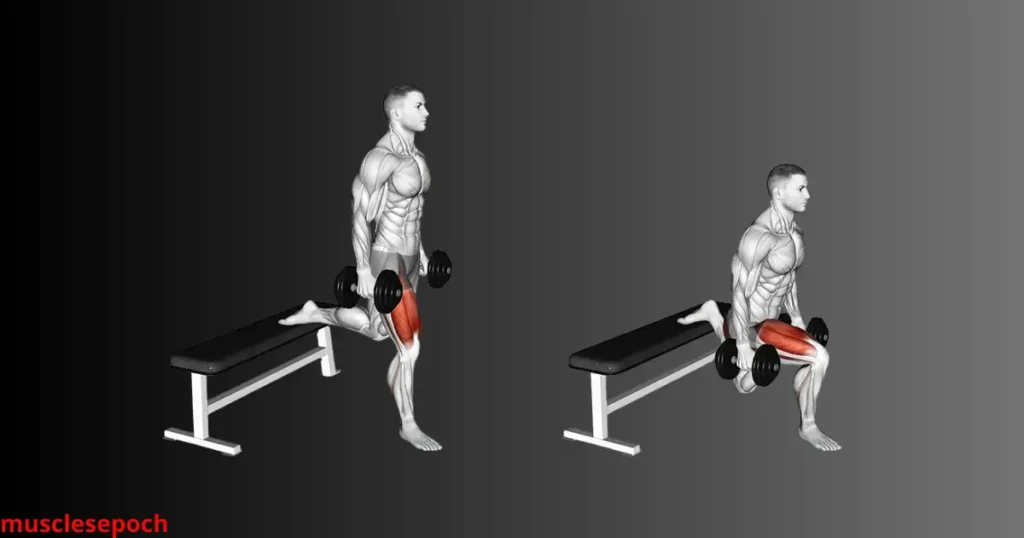
The dumbbell Bulgarian split squat is one of the most effective and challenging leg press alternatives—perfect for beginners ready to take their lower-body training to the next level. It’s a single-leg squat variation that deeply targets the quads, glutes, hamstrings, and core, offering strength, stability, and balance benefits that the leg press machine simply can’t provide.
How It Works:
Stand about two feet in front of a bench or sturdy surface. Place the top of one foot behind you on the bench. Hold a dumbbell in each hand at your sides. Lower your back knee toward the floor while keeping your chest upright and your front knee tracking over your ankle. Once your front thigh is about parallel to the ground, push through your front heel to return to the starting position. Complete all reps on one side before switching legs.
Why Bulgarian Split Squats Are a Top Leg Press Alternative:
- Deep Quad and Glute Activation – This exercise puts a high workload on each leg, allowing you to build strength faster than many bilateral (two-leg) exercises.
- Minimal Equipment, Maximum Results – All you need is a bench and a pair of dumbbells to get a deep, targeted leg workout.
- Improves Balance and Coordination – Performing a single-leg movement forces your stabilizing muscles to work hard, especially your core and hips.
- Reduces Muscle Imbalances – By training each leg independently, it helps correct strength or size differences between your left and right side.
Beginner Tip:
If you’re new to this movement, start with just your bodyweight until you master the balance and range of motion. Use a chair or wall for support if needed. Focus on keeping your front foot flat and your torso upright—avoid leaning forward or letting your front knee collapse inward.
The dumbbell Bulgarian split squat is often more effective than the leg press when it comes to functional strength and muscle development—making it a smart choice for beginners who want real results without fancy equipment.
Tips for Getting Results Without a Leg Press Machine
Focus on Progressive Overload
If you want to see real results from your leg press alternative exercises, there’s one principle you absolutely must follow: progressive overload. This simply means gradually increasing the demand on your muscles over time so they continue to grow stronger and more resilient.
While the leg press machine often allows for easy weight adjustments, you can apply progressive overload just as effectively with bodyweight and dumbbell exercises—no fancy equipment needed.
Why Progressive Overload Matters:
- Your muscles adapt quickly. If you keep doing the same workout with the same weight, reps, or intensity, your progress will stall.
- Consistently challenging your muscles encourages growth, improved endurance, and increased strength.
- It helps avoid plateaus and keeps your workouts productive and rewarding.
How to Apply Progressive Overload Without a Machine:
- Increase Reps or Sets
– Gradually add more repetitions or sets to your exercises each week.
Example: Go from 3 sets of 10 goblet squats to 4 sets of 12. - Add Resistance
– Start with bodyweight, then move to dumbbells, heavier weights, or resistance bands.
Example: Use a heavier dumbbell for your goblet squat or lunge once the current one feels too easy. - Slow Down Your Tempo
– Slowing down the eccentric (lowering) phase of a movement increases time under tension, boosting muscle engagement.
Example: Take 3–4 seconds to lower into a squat. - Reduce Rest Time Between Sets
– Shorter rest periods increase workout intensity and cardiovascular challenge.
Example: Rest for 30 seconds instead of 60 between lunge sets. - Try More Advanced Variations
– Progress to more difficult exercises like Bulgarian split squats or weighted step-ups once the basics become too easy.
Beginner Tip:
Track your workouts using a notebook or app. This helps you monitor your sets, reps, and weights, making it easier to know when it’s time to level up.
With consistent focus on progressive overload, your leg press alternative workouts will continue to deliver serious strength and muscle gains—without ever needing the machine.
Mind-Muscle Connection Matters
When performing any leg press alternative exercise, especially as a beginner, one of the most underrated tools you can use is the mind-muscle connection—the intentional focus on feeling the target muscles working during each repetition.
Instead of going through the motions, tuning in to the sensation of your muscles contracting helps you get more out of every movement. It’s not just about doing the exercise—it’s about engaging the right muscles while you do it.
Why Mind-Muscle Connection Is So Important:
- Improved Muscle Activation – Studies have shown that focusing on a specific muscle during exercise leads to increased activation and better results.
- Reduces the Risk of Compensating – Beginners often unconsciously shift tension to stronger muscles (like the lower back) if they’re not focused, especially in squats or lunges.
- Better Technique and Form – Being mentally present in each rep helps reinforce proper movement patterns and avoid bad habits.
- Maximizes Gains Without More Weight – You don’t always need heavier dumbbells to progress. Feeling the burn in the right places can make light weights more effective.
How to Apply Mind-Muscle Connection:
- Slow Down the Movement
– Don’t rush through reps. A slower pace allows you to feel your quads, hamstrings, or glutes engaging. - Visualize the Muscle Working
– Imagine your quads contracting during a goblet squat or your glutes firing during a lunge. Visualization helps deepen the connection. - Touch the Target Muscle
– In some cases, gently tapping or placing a hand on the working muscle helps bring awareness to that area (e.g., placing a hand on the thigh during wall sits). - Focus on Quality, Not Quantity
– Ten controlled, focused reps will always be more effective than twenty rushed ones with poor form.
Beginner Tip:
Before each set, take a deep breath, reset your posture, and mentally “dial in” to the muscle you’re targeting. With time, this habit becomes automatic—and your results will reflect it.
The mind-muscle connection might sound subtle, but it can completely transform how your leg press alternatives feel and function, making every rep count toward your strength and muscle-building goals.
Train Consistently with Proper Form
When it comes to seeing real progress with leg press alternative exercises, consistency and proper form go hand in hand. Even the most effective workouts won’t deliver results if you’re not performing the movements correctly—or if you’re only training once in a while.
Form is especially important for beginners. It sets the foundation for safe, efficient movement and ensures you’re targeting the right muscles. Meanwhile, consistency is what transforms your effort into visible strength and muscle gains over time.
Why Proper Form Is Crucial:
- Prevents Injuries – Bad form can strain your joints, especially in exercises like squats or lunges. Proper alignment protects your knees, hips, and back.
- Maximizes Muscle Engagement – Clean technique ensures the targeted muscles—like the quads, glutes, and hamstrings—are doing the work instead of letting other muscles take over.
- Builds Good Habits Early – Learning the right way to move from the beginning helps you avoid bad habits that are harder to fix later.
Why Consistency Matters:
- Muscles Respond to Repetition – Training once a week won’t cut it. Regular workouts (2–3x/week for legs) signal your body to adapt and grow.
- Compounds Your Progress – Consistent training lets you track improvements in strength, endurance, and form—week after week.
- Builds Confidence and Routine – The more regularly you train, the more natural it feels. That builds long-term habits and motivation.
How to Stay Consistent and Maintain Good Form:
- Schedule Your Workouts – Treat them like appointments. Pick 2–3 specific days each week to focus on leg training.
- Use Mirrors or Record Yourself – Visual feedback can help you catch form mistakes and fix them early.
- Start Light and Master the Movement – Don’t rush to lift heavy. Begin with bodyweight or light dumbbells until the motion feels second nature.
- Warm Up and Cool Down – A few minutes of mobility work before and after training improves movement quality and reduces soreness.
Beginner Tip:
Make it a goal to progress with perfect form—not just heavier weights. Quality always beats quantity, especially when you’re building your foundation.
By training consistently and prioritizing proper technique, your leg press alternatives will be safer, more effective, and far more rewarding. This is how beginners set themselves up for long-term strength and muscle-building success.
Conclusion
You don’t need a leg press machine to build stronger, more powerful legs. With smart exercise choices like bodyweight squats, goblet squats, lunges, and step-ups, beginners can easily target the same muscle groups in a more natural and functional way.
By focusing on proper form, consistent effort, and progressive overload, these leg press alternative exercises can help you reach your strength goals whether you’re training at home or in the gym.
Start with a few of these movements, build confidence, and stay consistent. Your lower body transformation is just a few reps away—no machine required!
